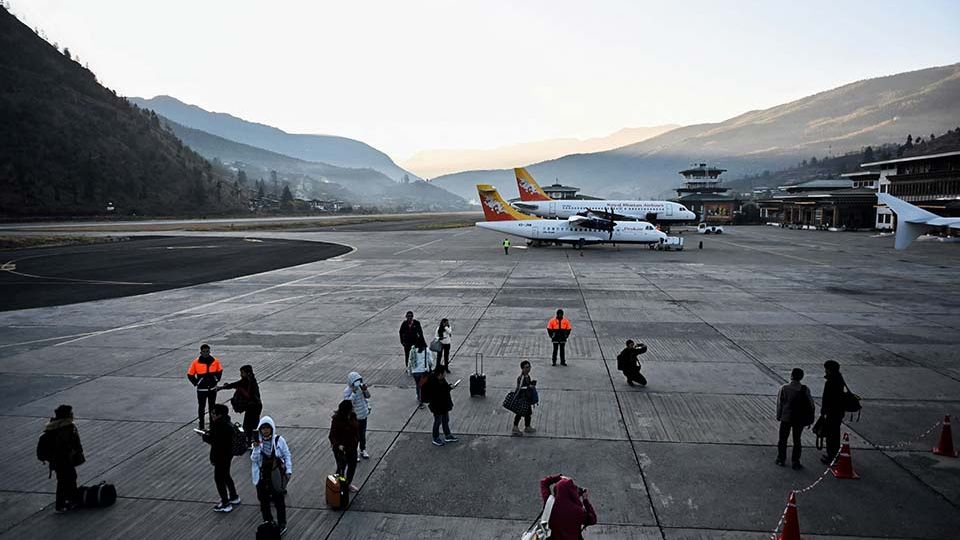May 29, 2025
THIMPHU – Despite a record wave of emigration, many Bhutanese living abroad are not closing the door on home. A new World Bank survey reveals that a majority of Bhutanese migrants, both those who have already left and those aspiring to leave, are open to returning. But there’s a catch: the quality of jobs and pay must be better.
According to the World Bank’s Bhutan Development Update report released on May 26, 77.7 percent of aspiring migrants and 63.5 percent of current migrants said they would consider coming back if job quality and working conditions improve.
For most, the decision hinges not just on pay, but on professional dignity and stability. While many are willing to accept lower wages than what they currently earn abroad, about 25 percent would only return for equal or higher salaries. One in five current migrants and one in 10 aspiring migrants said they would only return for jobs paying more than Nu 100,000 (USD 1,170) per month, a figure well above the average salary in Bhutan.
The survey highlights a key dilemma: the migration crisis is not necessarily irreversible. But whether the country can create enough incentive for its citizens to come home remains an open question.
Migration trends
Bhutan is witnessing an unprecedented surge in international migration, with departures from Paro International Airport increasing more than tenfold since before the Covid-19 pandemic, from fewer than 500 monthly to over 5,000 by early 2023. The Bhutan Development Update identifies a potent combination of domestic push factors and international pull factors that are reshaping the country’s demographic and economic landscape.
As per the data shared by the World Bank’s Global Bilateral Migration Matrix (2000–2020), between 2000 and 2020, the proportion of Bhutanese emigrants holding university degrees rose from 8.6 percent to 13.5 percent.
The pace has only accelerated since international borders reopened in 2022, with Australia emerging as the most popular destination for Bhutanese migrants. According to the report, the migrant population in Australia has doubled from 12,424 in 2020 to over 25,000 today.
Who is migrating, and why
To understand the shifting migration trends, the World Bank conducted a phone survey, covering 1,208 households. Of these, 465 included recent migrants, mainly to Australia post-2022, and 143 had aspiring migrants. The rest served as a control group.
Among migrants, 53 percent are women, with an average age of 29, and 85 percent are married and well-educated (over half hold university degrees). In contrast, aspiring migrants are younger, predominantly male, and less educated.
For many, education is a key driver. About 42 percent of current migrants are either enrolled in academic programmes or are working while studying. Among aspiring migrants, 64 percent cite education as their primary motivation for going abroad.
Income is another major factor. Most migrants reported earning less than Nu 40,000 (USD 468) per month in Bhutan, compared to over Nu 60,000 (USD 702) after migrating. Strikingly, 40 percent now report monthly earnings exceeding Nu 220,000 (USD 2,573).
According to the World Bank report, every migrant reported an income increase after leaving the country.
Favourable visa policies, relatively affordable tuition and cost of living, and well-established Bhutanese diaspora networks make Australia particularly appealing.
Push factors at home
The migration surge is compounded by growing domestic frustrations, particularly within the labour market. Bhutan’s national unemployment rate doubled from 3 percent before the pandemic to 6 percent in 2022. Urban women, youth aged 20–24, and highly educated job seekers have been especially affected.
Job quality remains a concern. Over 60 percent of Bhutan’s workforce report being overworked, and many lack formal contracts.
Public sector employees are also increasingly becoming disillusioned. In 2024 alone, more than 2,000 civil servants resigned, 70 percent of them voluntarily.
Concerns about career stagnation, low pay, bureaucratic hurdles, and high workloads, particularly in health and education, are fueling exits. The health sector has seen a 16 percent attrition rate among nurses, and many report job dissatisfaction and insufficient compensation.
Occupational downgrading
The survey also revealed that many Bhutanese migrants experience occupational downgrading after moving abroad. Before migrating, only 1 percent worked in low-skilled jobs, but this jumps to 27 percent in destination countries. While 46 percent held professional roles in Bhutan, just 3 percent did so after migrating. Casual labour also rose from 4 percent in Bhutan to 22 percent abroad.
However, many migrants are currently students, and the World Bank cautions that the job downgrade may be temporary. Future employment outcomes will depend on several factors and merit ongoing monitoring.
Policy recommendations
The World Bank recommends Bhutan to adopt three approaches to manage external migration. First, to retain talent, the Bank suggests improving job quality, diversifying the economy beyond hydropower and enhancing public sector jobs, especially in health and education.
Second, to reduce brain drain, the Bank advises the country to expand training and certification for skilled workers through international partnerships like Global Skills Partnerships, and consider service requirements or labour agreements with destination countries.
And third, to maximise migration benefits, the bank recommends Bhutan to provide financial guidance to prospective migrants, engage the diaspora, support returnees, and promote formal, low-cost remittance channels to boost national development.


